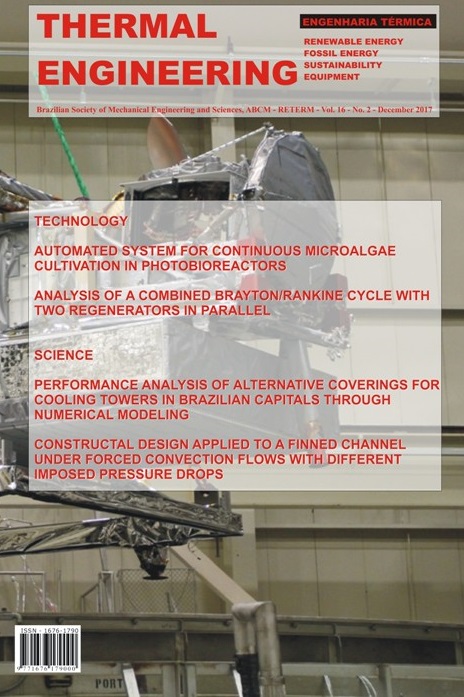EDITORIAL
DOI:
https://doi.org/10.5380/reterm.v16i2.62202Keywords:
Revista de Engenharia Térmica, Termal Engeneering Magazine, RETERM,Abstract
There is currently a strong UN and IPCC-led campaign promoting the rejection of oil-derived fuels because of the risk of global warming. However, global demand for oil does not decline, but tends to increase to 100 million barrels per day in 2018 according to the International Energy Agency (IEA). This clearly demonstrates that a speech is not enough, but new sources of energy are needed that can unequivocally replace oil from a technical and economic point of view. In this context, one of the possible solutions is the introduction of biorefineries, which have the capacity to process biomass from different sources, generating several products and fuels derived from biomass. An example of biorefinery is the production of ethanol from sugarcane bagasse, where all sugarcane biomass is harvested for ethanol generation. However, the processes involving biorefineries are still in laboratory or pilot scale, because these processes are not yet economically feasible. One of the crucial bottlenecks of a biorefinery is the energy cost of the processes involved, which is often greater than the energy gain obtained. One way to reduce the energy costs of these processes is thermodynamic optimization. For this, mathematical models are needed that are capable of describing all the processes that occur within a biorefinery. Unfortunately, there is no such tool available, which makes thermodynamic optimization of biorefinery impossible. However, for oil refining, this tool is already available even in the form of commercial software such as Aspen Plus, after all petroleum refining is an industry more than a hundred years old and so the exploitation of oil is so profitable. If biorefineries want to compete with the oil industry, it is necessary to develop simulation tools that can be used for thermodynamic optimization, so that the processes of a biorefinery become economically feasible.
Downloads
Published
How to Cite
Issue
Section
License
Direitos Autorais para artigos publicados nesta revista são do autor, com direitos de primeira publicação para a revista. Em virtude da aparecerem nesta revista de acesso público, os artigos são de uso gratuito, com atribuições próprias, em aplicações educacionais e não-comerciais.



